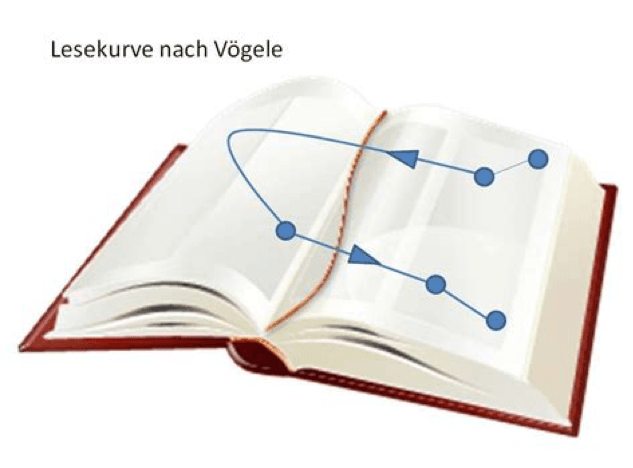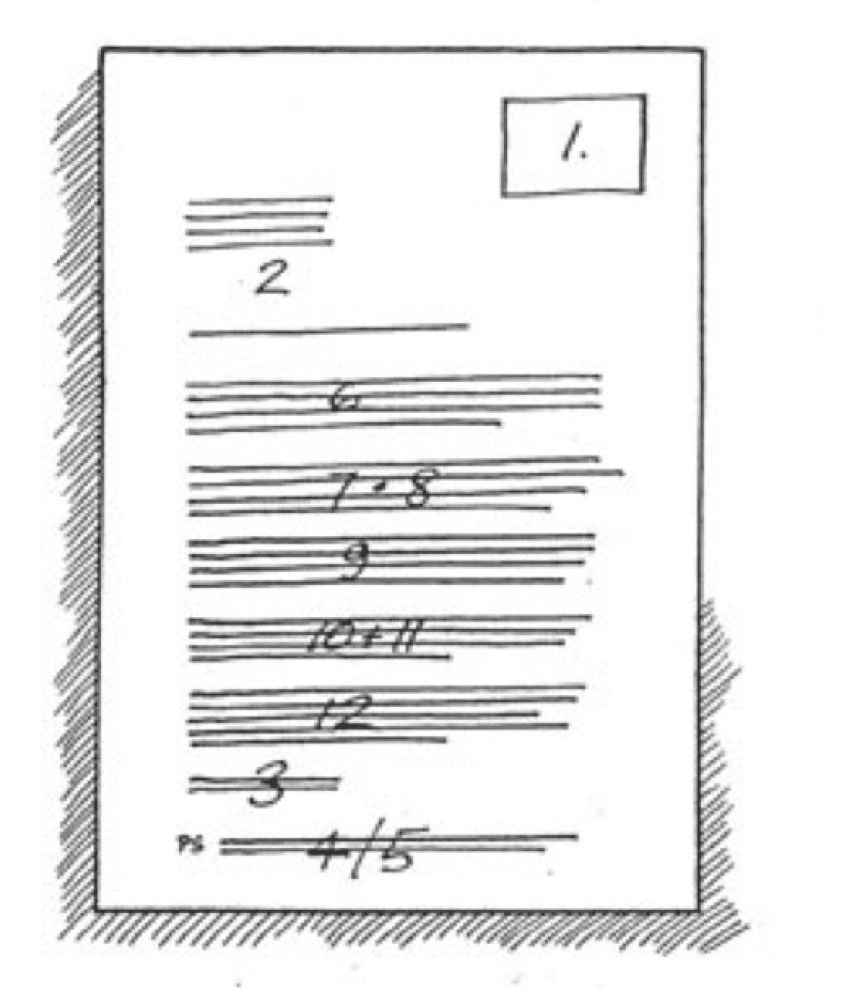Secrets of direct mail 1: the extraordinary findings of professor Siegfried Vögele
Siegfried Vögele was the first person to analyse how people react to direct mail letters, so there’s a lot to learn in this new series exploring his approach and how it can be applied.
- Written by
- Chris Keating
- Added
- May 30, 2019

This article was first published in February 2019 by Chris Keating on Medium and can be found here.
If you’ve ever read a direct mail letter you have probably encountered the work of Siegfried Vögele. Through countless experiments and observations in the 1970s and 1980s, he was the first person to exhaustively analyse how people read and interact with letters they receive.
Much of what we today call good practice in direct marketing stems from his book ‘Handbook of Direct Marketing — The Dialogue Approach.’ Things like always including a PS or underlining the most relevant parts of the letter, which lots of people will say they ‘know are important’, were either first implemented or first proved by his work.
Very sadly, Siegfried Vögele died in 2014. His book is long out of print and sells for an exorbitant sum. Many of the same things have said since by other people, but rarely with the same clarity and precision.
If you are willing to learn from this fundamental approach to direct mail, then read on!
The first post in this series covers Vögele’s approach and the principles behind it. Three more posts outline the details of how to apply his dialogue method to different aspects of communication by direct mail. Post 2 is about envelopes. Post 3 is about how people read letters. Post 4 will look at storytelling in Vögele’s framework.

The dialogue method
There’s one key insight that lies behind Siegfried Vögele’s approach. Let’s do a thought experiment to illustrate it.
Imagine: You’re at home drinking a cup of tea quietly and someone knocks on your door unexpectedly. What thoughts go through your head?
Who is it? What do they want? Am I expecting a delivery today? Is it really worth my effort engaging with them? Maybe they’re selling something. Or maybe the Police are finally catching up with me!
You look through the keyhole. There’s a young person there, smartly dressed, some kind of ID badge visible. Probably selling something. What are they selling? Do I really care? Should I open the door, or pretend to be asleep?
You open the door. ‘Hi, I’m Becky and I’m from…. We’re just doing some fundraising in your street. Could you spare five minutes to talk about how you can support the capybaras?’ She holds up a photo of a cute animal.

Chances are that by now you know whether you want to keep talking about the plight of the capybaras, or whether you want to end the conversation as quickly as possible.
That’s because you now have the answer to many more questions.
What do they want? Probably money. What for? Some kind of animal. Do I care about animal charities? Does it sound interesting? Is it worth the time to have the conversation?
Twenty unspoken questions
Siegfried Vögele’s essential insight is that people approach a direct mail item with roughly the same questions, in roughly the same order, as they do a salesperson knocking on their door.
People ask themselves at least 20 unspoken questions as they go through the process of picking up a mail item, deciding whether to open it, deciding whether to read it, reading it, and deciding whether to respond.

That might seem like a lot of questions — but don’t forget, people think quickly, much more quickly than they speak or type.
If you design your direct mail item to lead people through these questions and give positive answers to them, then you have the best chance of getting the response you want.
Filters and Amplifiers
Vögele terms anything that increases engagement with a direct mail item as an amplifier. It’s a little ‘yes’ that takes you on the way towards the big ‘YES’ of a response.
Amplifiers are anything that give clear, positive answers to the reader’s unspoken questions. Amplifiers might also reinforce the answer that the reader has already given, producing a sense of satisfaction. An amplifier makes the reader more likely to read on, and more likely to ultimately respond.
A filter is anything confusing, irrelevant or uninteresting.
It’s a little ‘no’ that takes you on the way towards the big ‘NO’ of your mailing being thrown away. A filter fails to answer the reader’s unspoken questions, or gives a boring or negative answer, or contradicts a previous answer. A filter makes the reader less likely to respond.
Examples of filters and amplifiers:
‘Who is this from?’
Imagine a letter with a logo on the envelope, a return address on the flap that matches the logo, a logo on the letterhead, and a signatory who mentions their name, job title and organisation at the bottom of the letter. All those things are clear and consistent answers to ‘Who is this from?’ — which is an amplifier. If the organisation is one the recipient knows or likes or is expecting a letter from — that’s a further amplifier. The letter is very likely to be read.
Now imagine there is one logo on the envelope and a different logo on the letterhead, and the signature is an illegible scribble with no further details. You have no idea who this is from, you’re already irritated with it, and you will have to read it properly to find out. That’s a filter. This letter is already on the verge of being thrown in the bin.
The quality of your direct mail pack, and the likely response rate, can be expressed in the equation: Impact = Amplifiers —Filters.
What are the unspoken questions?
Everyone asks unspoken questions like ‘Who is this from?’, ‘What do they want’, ‘Do I care about it?’
Other unspoken questions are specific to products, categories, organisations or individual customers. ‘How much are they asking for this time? Have they remembered that I sent them a cheque last month?’ might be one set of questions. ‘When is this up for renewal? How much do they want? Can I still cancel with no hassle?’ could be a third.
Vögele suggests brainstorming what questions your customers will have. He observed that sales and customer services staff will know what comes up in the real conversations that your direct mail replaces.
Planning campaigns to increase your amplifiers
Effective direct mail, according to Vögele, is direct mail with many amplifiers. It leads your customers to find the right answers to their unspoken questions.
While much of his work is about how you design and write your direct mail, filters and amplifiers start at the planning stage of your campaign. Inappropriate personalisation, irrelevant offers, and inaccurate names or addresses are all big filters you need to avoid.
Do you know your donors or customers? What motivates them to buy or give? Can you prove it? Have you tested it? These questions are all still important.
The roles of envelope, letter, response form and enclosures
The envelope for your letter is the ‘first contact stage’ – equivalent to what happens when you open the door and see the person who’s knocking.
The letter itself is the ‘contact stage’, the start of the actual conversation. Vögele believes that people look for answers to personal questions like ‘why write to me?’ ‘Where did they get my address from?’ and ‘Who signed it?’ from the letter, and only from the letter.
A response form or card is the ‘concluding phase’, which answers questions like ‘What should I do?’ ‘Do I have to sign anything?’ ‘Do I need a stamp?’. If there’s no response device, the reader will assume no response is needed.
Often, there will be more questions that need answers between the letter and the response form. If you’re selling a complicated or expensive product, then you’ll probably have a long conversation about features and benefits before anyone replies. That’s the role of enclosures, brochures and similar. (At least, it is if you’re aiming to seal the deal with one mailing, rather than have a response that’s an expression of interest that you will follow up with further information)
The first 20 seconds
On picking up a letter, the recipient spends up to twenty seconds deciding whether they are going to read it properly. These are the most important twenty seconds for you — because if everyone throws your mailing away (or even puts it in a pile to one side to read later) then you have no hope of getting any responses.
The key questions to answer in the first twenty seconds are:
- What do they want from me?
- What benefit is there in it for me?
- Do I need it?
- Is it for me?
[An observation: For those of us in the charity sector, we might replace these with: ‘What are they asking me to do?’ ‘Is this something I care about?’ ‘What can I achieve if I donate?’]
The first twenty seconds break down into three phases.
0 to 8 seconds: Opening the envelope. The recipient looks at the envelope, reads the address, the sender, and any other information, then open it and unfolds the contents.
9 to 12 seconds: Unfolding the contents. The recipient forms a picture of what the mailing is about, based on the mailing contents as they come out of the envelope and are unfolded.
13 to 20 seconds: Skim-reading the contents. The recipient sees pictures and headlines. They look at the letter, starting at the heading, address, and ‘Dear Bob,’ and skip straight to signatory and the PS.
‘The order in which the reader will read your letter! If the recipient has started to read your letter within 20 seconds of picking it up, then you’re doing well!’ - Siegfried Vögele, Handbook of Direct Mail
The next stages start with reading your letter in more detail, looking at the enclosures, possibly researching your product and discussing it with colleagues, friends or family — and hopefully ends with a response.
Wrapping up…
I first encountered titbits from the Vögele dialogue method when I was training to be a campaign manager for a political party. But I didn’t realise it was a coherent method until I first read about it in Mal Warwick’s How to Write Successful Fundraising Letters, and then bought Vögele’s Handbook of Direct Mail.
I found the dialogue method revolutionised my thinking about how to create direct mail — and even 13 years later I still find myself thinking ‘How is someone going to read this? Is that really the right way to phrase it on the envelope? Are we really clear enough about the benefits of reading on?’ Hopefully you will feel the same way!
Look out for the rest of the series to find out more about how to improve every element of your pack to be more likely to get a better response.
© Chris Keating 2019. Reproduced with permission.

















